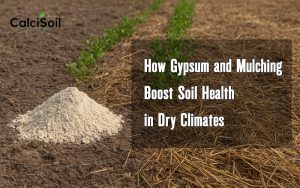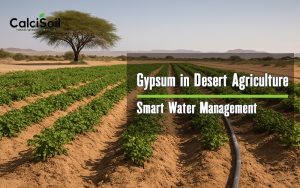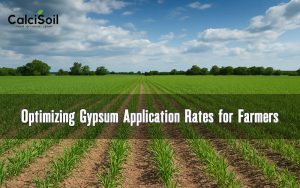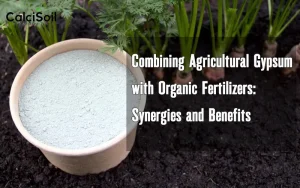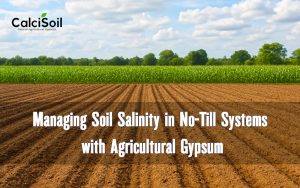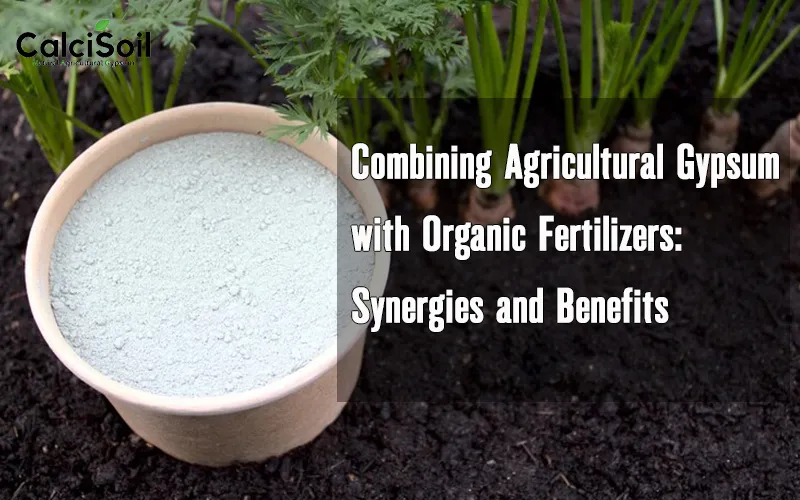
Agricultural Gypsum with Organic Fertilizers
Soil management in modern agriculture is no longer about choosing one single amendment or fertilizer. Farmers are increasingly looking at integrated approaches that combine the best of different practices. Among these, pairing agricultural gypsum with organic fertilizers is gaining attention for the way it enhances soil health, nutrient availability, and long-term sustainability. While each input has its unique benefits, together they can create a synergy that improves both short-term productivity and long-term resilience of the soil.
Why Gypsum Fertilizer Alone Is Valuable
Gypsum fertilizer has long been recognized as a reliable soil amendment. It provides two essential nutrients, calcium and sulfur, which are vital for crop growth. Calcium strengthens cell walls and improves root penetration, while sulfur supports protein formation in crops like wheat, corn, and legumes. Beyond nutrients, gypsum helps reduce compaction, flocculates clay soils, and lowers sodium levels in saline or sodic fields. These properties make it an excellent tool for managing soil structure and improving water infiltration.
The Role of Organic Fertilizers in Soil Health

On the other hand, organic fertilizers—such as compost, manure, or biochar—supply a wide array of nutrients while enhancing soil organic matter. They fuel microbial activity, improve cation exchange capacity, and contribute to a living, breathing soil ecosystem. Organic inputs also build humus, which increases water-holding capacity and stabilizes soil aggregates. Over time, this organic matter acts as a buffer against erosion and nutrient losses.
The Science of Synergy
When agricultural gypsum is applied alongside organic fertilizers, the effects compound in powerful ways. Gypsum improves soil structure, allowing organic matter to integrate more deeply into the soil profile. At the same time, the calcium from gypsum binds with organic acids, helping to stabilize soil aggregates. This combination creates an environment where microbial life thrives, and nutrients are both more available and less prone to leaching. The result is a healthier soil ecosystem that sustains productivity over the long term.
Enhancing Nutrient Efficiency
One key advantage of combining gypsum fertilizer with organic inputs is improved nutrient use efficiency. Organic fertilizers release nutrients slowly, but sometimes nutrients like nitrogen or phosphorus can escape through leaching or runoff. Gypsum helps lock these nutrients in place by improving infiltration and reducing runoff losses. For example, phosphorus retention is enhanced in fields treated with gypsum, making it more available for crops rather than washing away into waterways. Farmers who rely on costly organic amendments benefit more from their investment when gypsum is part of the program.
Addressing Soil Salinity and Sodicity
In regions where salinity and sodicity are major challenges, gypsum plays a crucial role in displacing sodium ions from soil particles, thereby restoring soil structure. Organic matter, meanwhile, improves the soil’s water-holding capacity and microbial diversity. Together, they form a dual strategy: gypsum tackles the chemical imbalance, while organics build resilience against further degradation. This is particularly important in arid or semi-arid farming systems, where salt accumulation threatens long-term productivity.
Practical Guidelines for Farmers

The question many growers ask is: how should they apply both inputs for maximum impact? The general recommendation is to apply gypsum fertilizer at rates determined by soil testing, typically broadcast across the field. Organic fertilizers can then be applied either before planting or as side-dressings during the growing season. Incorporating both into a no-till or reduced-tillage system further protects the soil by minimizing disturbance. Consistency is key—regular applications over multiple seasons create cumulative benefits that are far greater than one-time treatments.
Economic and Environmental Payoffs
From an economic perspective, farmers may initially view the combined use of Agricultural Gypsum with Organic Fertilizers as an added cost. However, the long-term payoffs are significant. Higher yields, reduced nutrient losses, and improved soil resilience mean better returns per acre over time. Environmentally, this combination supports cleaner waterways, reduced greenhouse gas emissions from synthetic inputs, and healthier soil biology. It aligns well with regenerative and conservation-focused farming systems that are increasingly in demand worldwide.
Conclusion: Building a Resilient Future
The integration of Agricultural Gypsum with Organic Fertilizers is more than just a practical soil amendment strategy—it’s a vision for sustainable farming. By harnessing the strengths of both, farmers can improve soil structure, enhance nutrient cycling, and reduce environmental risks. This synergy creates healthier soils that support higher yields today and safeguard productivity for future generations. For growers seeking to balance immediate needs with long-term sustainability, the combination of gypsum and organics is a proven, powerful path forward.


